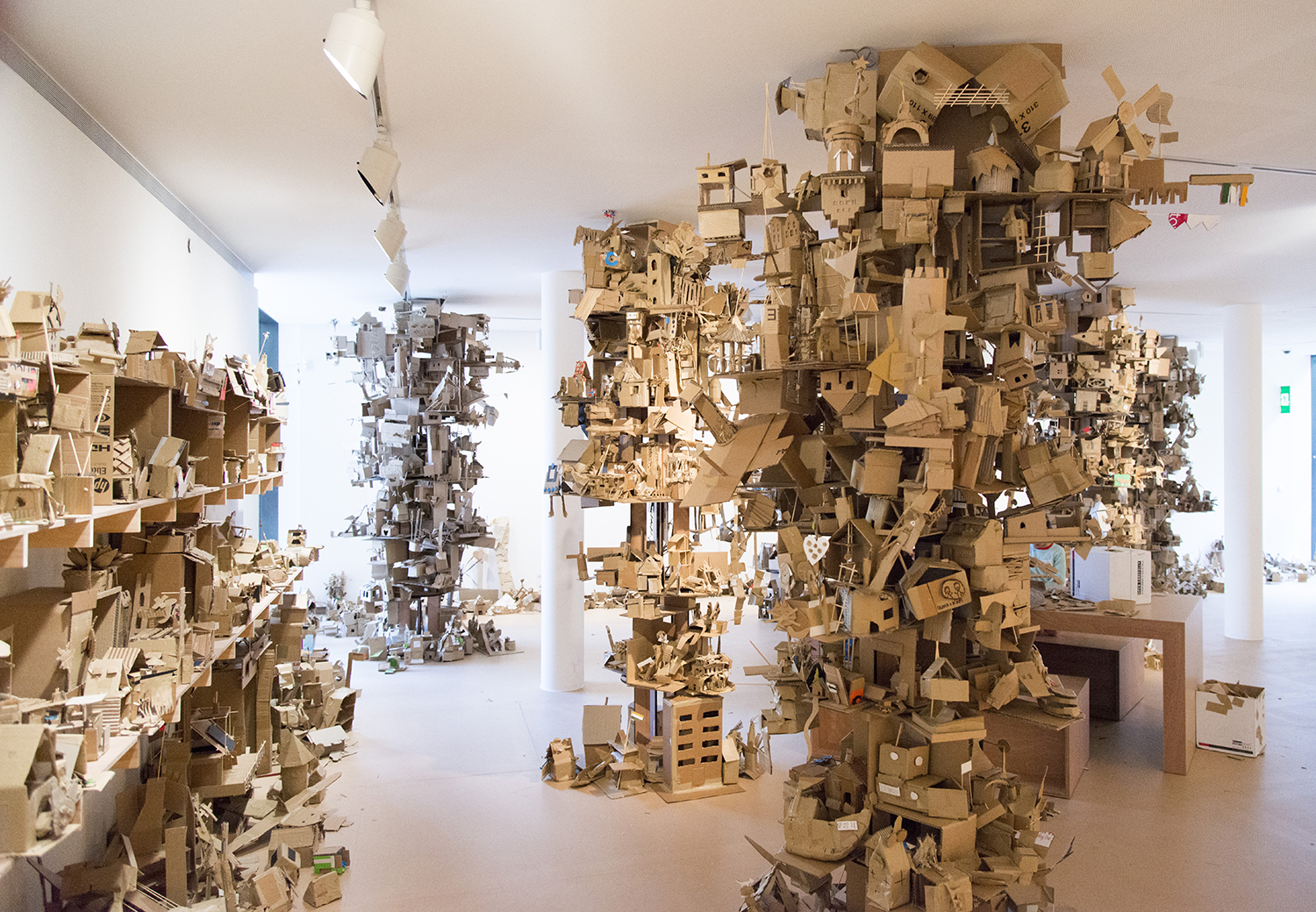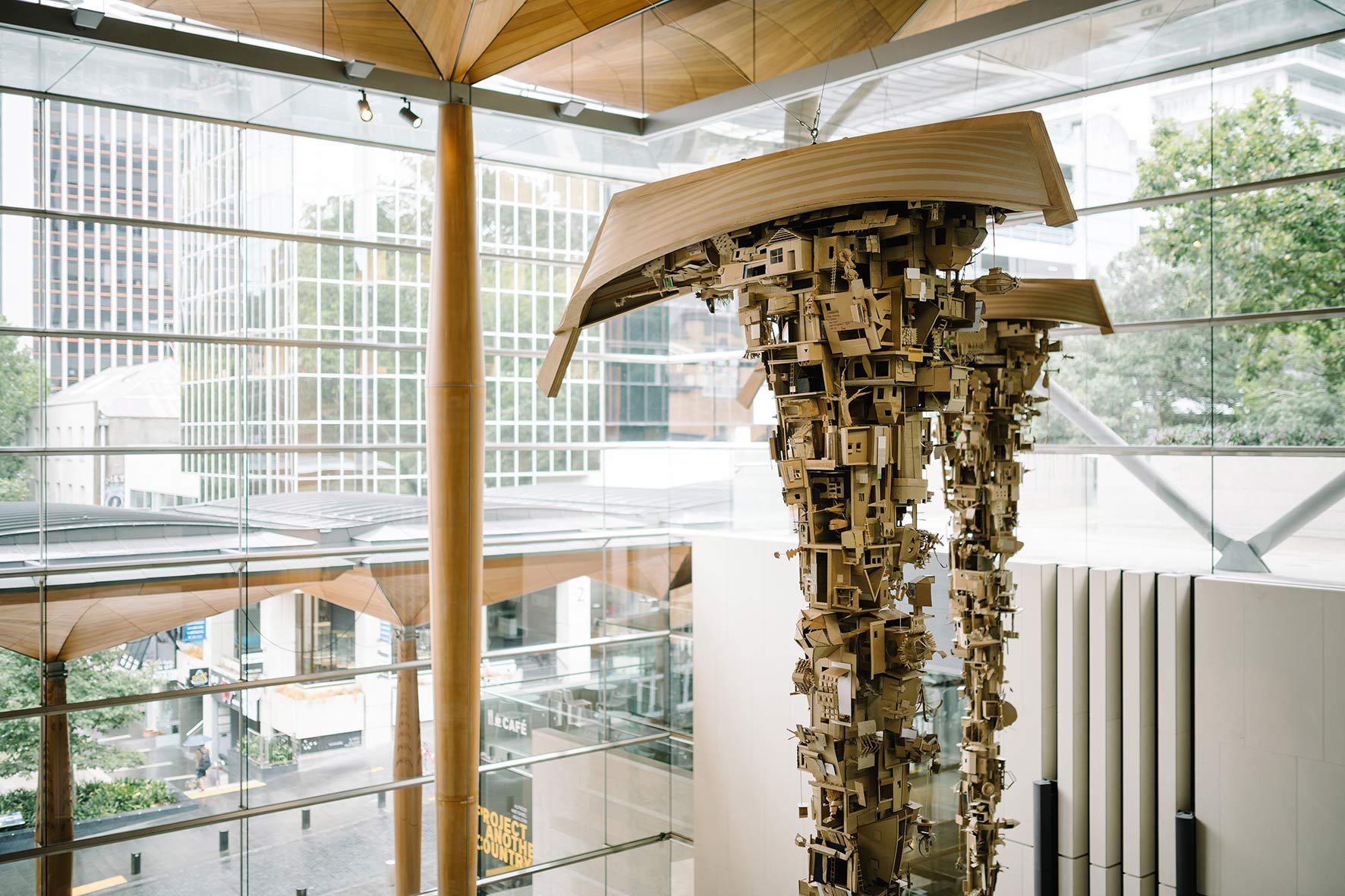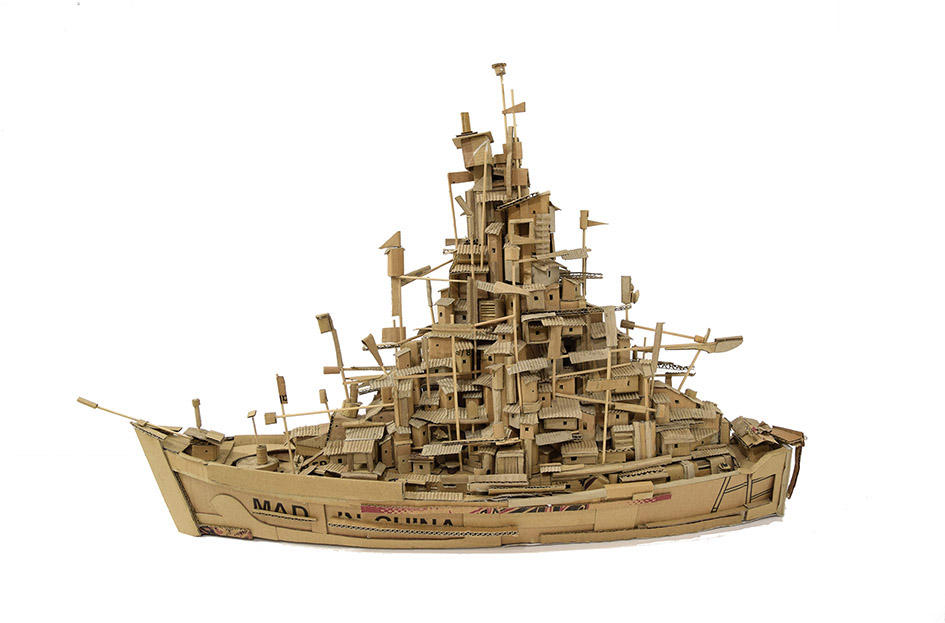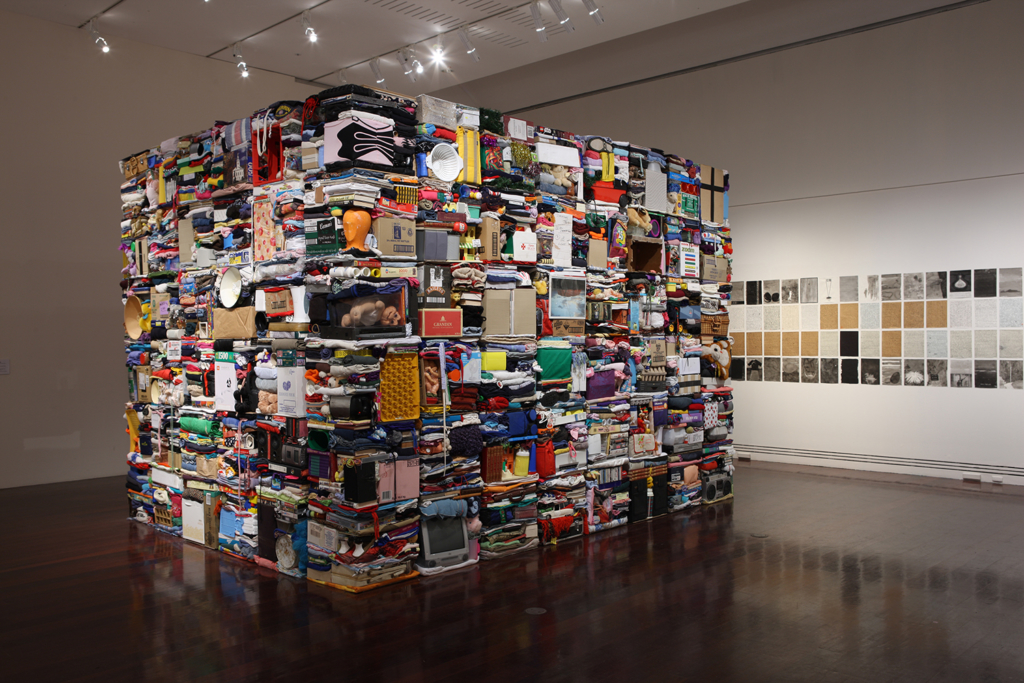
Alfredo and Isabel Aquilizan tackle displacement, community development, and memory in their cities and structures made of cardboard. Their work ranges from these sculptures and installations to drawing, paintings, and works on paper. Their current, major installation at Auckland Art Gallery Toi o Tāmaki, “Pillars: Project Another Country,” “explores fundamental ideas about what creates community, what constitutes family, and how homes are fabricated around human needs and relationships.”



“After relocating their center of activity from the Philippines to Australia in 2006, expressions of their own identity and ‘habitat’ have become important themes,” Art Front Gallery says. “By making luggage sekking for new residences and community, their work makes us think about the increasing speed of human migration and urban development in the world today.”


https://www.instagram.com/p/BhCUzRFHwjv/


 Maurizio Savini has worked with chewing gum in his sculptures for more than 20 years. In that time, the artist has moved between Pop-influenced work, animal creations inspired by children’s tales, and more socially charged efforts. The Italian artist’s pieces, ranging handheld to massive in size, has been shown in gallery shows and exhibitions across the globe.
Maurizio Savini has worked with chewing gum in his sculptures for more than 20 years. In that time, the artist has moved between Pop-influenced work, animal creations inspired by children’s tales, and more socially charged efforts. The Italian artist’s pieces, ranging handheld to massive in size, has been shown in gallery shows and exhibitions across the globe.

 The ceramic sculptures of
The ceramic sculptures of